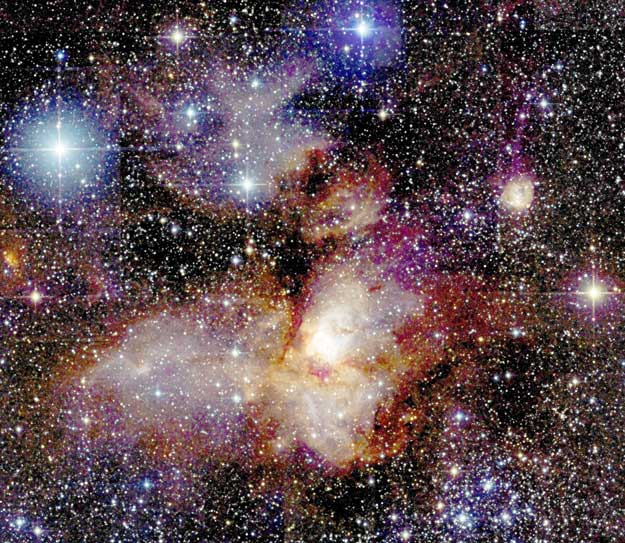Explanation: The star cluster in RCW38 was hiding. Looking at the star forming region RCW38 will not normally reveal most of the stars in this cluster. The reason is that the open cluster is so young that it is still shrouded in thick dust that absorbs visible light. This dust typically accompanies the gas that condenses to form young stars. When viewed in infrared light, however, many stars in RCW38 are revealed, because dust is less effective at absorbing infrared light. The above representative-color image mosaic of RCW38 taken by the 2MASS sky survey in infrared light shows not only many bright blue stars from the star cluster but clouds of brightly emitting gas and dramatic lanes of dark dust. RCW38 spans about 10 light-years and is located about 5500 light years away towards the constellation of Vela.
1999 2000 2001 2002 2003 2004 2005 2006 2007 2008 2009 2010 2011 2012 2013 2014 2015 2016 2017 2018 2019 2020 2021 2022 2023 2024 2025 |
Yanvar' Fevral' Mart Aprel' Mai Iyun' Iyul' Avgust Sentyabr' Oktyabr' Noyabr' Dekabr' |
NASA Web Site Statements, Warnings, and Disclaimers
NASA Official: Jay Norris. Specific rights apply.
A service of: LHEA at NASA / GSFC
& Michigan Tech. U.
|
Publikacii s klyuchevymi slovami:
emission nebula - open cluster - emissionnaya tumannost' - Rasseyannoe skoplenie
Publikacii so slovami: emission nebula - open cluster - emissionnaya tumannost' - Rasseyannoe skoplenie | |
Sm. takzhe:
Vse publikacii na tu zhe temu >> | |
